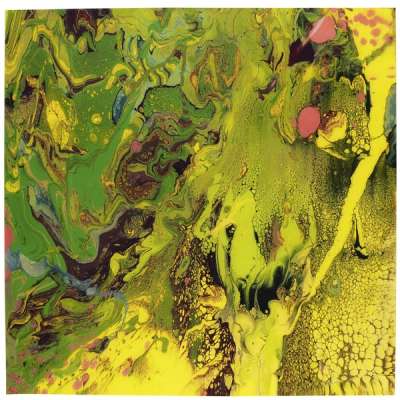
Flow (P4)

Flow (P4)
Unsigned Print
Gerhard Richter
Price data unavailable
AAGR (5 years) This estimate blends recent public auction records with our own private sale data and network demand.
There aren't enough data points on this work for a comprehensive result. Please speak to a specialist by making an enquiry.
Medium: Digital Print
Edition size: 500
Year: 2014
Size: H 45cm x W 45cm
Signed: No
Format: Unsigned Print
TradingFloor
Track this artwork in realtime
Watch artwork, manage valuations, track your portfolio and return against your collection
Track auction value trend
Auction Results
| Auction Date | Auction House | Location | Hammer Price | Return to Seller | Buyer Paid |
|---|---|---|---|---|---|
| April 2022 | Karl & Faber | Germany | |||
| March 2020 | Sotheby's London | United Kingdom | |||
| June 2018 | Sotheby's Milan | Italy | |||
| September 2017 | Sotheby's London | United Kingdom | |||
| June 2017 | Ketterer Kunst Hamburg | Germany | |||
| January 2017 | Lempertz, Cologne | Germany | |||
| September 2016 | Sotheby's London | United Kingdom |
Meaning & Analysis
The work of German artist Gerhard Richter, Flow (P4) was issued in an edition of 500 in 2014. Unsigned by the artist and part of the Flow series, the print showcases a typical example of Richter’s fruitful experimentations with diluting oil paints, which he carried out during the 2010s.
A far cry from Richter’s Cage Prints, Cage f.ff and Cage Grid series, each of which reference the artist’s 2006 ‘Cage’ paintings, this work appears all the more open to the constructive powers of error - a force Richter refers to lovingly as ‘chance’. Unlike the rigid, procedural abstracts produced with home-made squeegees, such as Cage Grid I Single Part L (2011) or Cage f.ff II (2015), Flow (P4) is a print imbued with a sense of fluidity. Product of an altogether more ‘loose’ approach, the print is dominated by yellow, green, red, and black sections of paint; a work of painterly alchemy, it evokes the chemical basis of the diluted oil paint used to create it, as well as the independent movement and interaction of these hues and chemicals in the moments directly following their first application.
Born in Dresden in 1932, Richter’s early contacts with art and the art world were ideologically and stylistically conflicting, and have gone on to influence his deconstructive approach in profound ways. Richter’s first known work was a mural entitled Communion With Picasso (1955) - a piece that suggested the artist’s profound influence by modernism. This work, however, was painted for the cantine of the Dresden Academy, where Richter received a strict, ‘socialist realist’ training. At the Academy, Richter was duty bound to create visual representations of the ‘workers’ struggle’, which were designed to fuel the East German consciousness with hopeful images vaunting the benefits of communism. In 1959, Richter visited the dokumenta II exhibition in the West German city of Kassel; later, having escaped to the West in 1961, he studied at the Kunstakademie Düsseldorf, later pioneering a style named Capitalist Realism.







